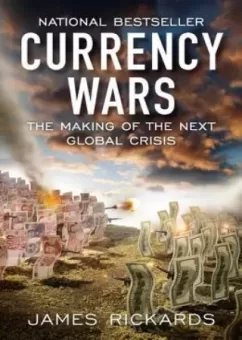World War I and the Treaty of Versailles—1914 to 1919
The last of the antecedents of Currency War I was the sequence of the Great War, the Paris Peace Conference and the Treaty of Versailles.
World War I ended not with surrender but with an armistice, an agreement to stop fighting. With any armistice, the expectation is that the cessation of hostilities will allow the parties to negotiate a peace treaty, but in some cases the negotiations break down and fighting resumes. Negotiation of a lasting peace was the objective of the Paris Peace Conference of 1919. England and France were well aware that the financial bill for the war was about to be presented. They saw the Paris Peace Conference as an opportunity to impose these adjustment costs on the defeated Germans and Austrians.
However, a successful negotiation in Paris was by no means a foregone conclusion. Although the German army and navy were definitely beaten by November 1918, as of the spring of 1919 no peace treaty had been concluded and it seemed increasingly unlikely that the Allies would be willing or able to resume the war. Therefore the reparations negotiations were just that: negotiations. The Allied ability to dictate terms had withered between November 1918 and March 1919, when the subject was taken up. Now Germany would have to be prevailed upon to agree to any plan the Allies devised.
The size and nature of German reparations were among the most vexing questions facing the Paris Peace Conference. On the one hand, Germany would be asked to cede territory and some industrial capacity. On the other hand, the more Germany gave up, the less able it would be to pay financial reparations that were also being demanded. France had its eye on German gold, which in 1915 had amounted to over 876 metric tons, the fourth largest hoard in the world after the United States, Russia and France.
While these reparations are often thought of solely in terms of how much Germany could afford to pay the Allies, the picture was considerably more complicated, as both the winners and the losers were in debt. As Margaret MacMillan writes in her book Paris 1919, both Britain and France had loaned vast amounts to Russia, which defaulted in the wake of the Russian Revolution. Other debtors, such as Italy, were unable to repay. Yet Britain owed $4.7 billion to the United States, while France owed $4 billion to the United States and another $3 billion to Britain. Virtually none of the debtor nations could afford to repay. The entire mechanism of credit and trade was frozen.
The issue was not just one of German reparations to the Allies but of a complex web of inter-Allied loans. Something was needed to reprime the pump and get credit, commerce and trade moving again. The optimal approach was to have the strongest financial power, the United States, begin the process with new loans and guarantees on top of those already provided. This new liquidity, combined with a free trade area, might have encouraged the growth needed to deal with the debt burdens. Another approach, also with much to recommend it, was to forgive all the debts and start the game over. While it would be difficult for France to forgive Germany, it would be a relief for France to be forgiven by the United States: the net effect on France would have been positive because the United States was more persistent as a creditor than Germany was reliable as a debtor. In fact, none of these things happened. Instead the stronger, led by England and France, prevailed upon the weaker, primarily Germany, to pay punitive reparations in cash, in kind and in gold.
Calculation of the reparations and agreement on a mechanism by which reparations would be paid was a nearly impossible task. France, Belgium and England wanted to base reparations on actual war damages, while the United States was more inclined to consider Germany’s ability to pay. The German statistics, however, were abysmal and no reliable calculation of their ability to pay could be made. The assessment of damages was also impossible in the short run. Many areas were barely accessible, let alone amenable to some sort of appraisal of needed reconstruction.
The Allies argued as much among themselves as they did with German representatives about whether reparations should be limited to actual damages, which favored France and Belgium, or should include purely financial costs such as pensions and soldiers’ salaries, which would favor England. In the end, no exact amount of reparations was specified in the Treaty of Versailles. This was the result of the technical impossibility of calculating a number and the political impossibility of agreeing to one. Any figure high enough to enjoy domestic approval in England and France might have been too high for the Germans to agree to and vice versa. American admonitions for moderation and practicality were largely ignored. Domestic politics triumphed over international economic needs. Instead of a specific number, expert panels were empowered to continue studying the question and make specific findings in the years ahead, which would form the basis for actual reparations. This bought time, but the hard issues on reparations were put off only to become entangled during the 1920s with the gold exchange standard and efforts to restart the international monetary system. Reparations were like an albatross hung around the neck of the international financial system for the next fifteen years.




